# 21 Mushrooms With a View: Falling in Love with Bracciano
On Italian food, making connections, and happiness squared.
Bracciano, Medieval Castle Town on a Lake
I’m drawn to the castle as though I’m under a spell. It was dark when I arrived in Bracciano last night, the trains from the airport first delayed then canceled, so I’m keen to explore the town now. I hike up a curved cobblestone street, past a closed church and a terrace bar where a few elderly men nurse their espressos as though they have all the time in the world—they probably do. It’s a cloudy Monday morning and nobody except for a woman with a broom is in a rush.
Bracciano sits regally on a hill in Lazio in a once Etruscan land, 40 km north of Rome and 40km south of Viterbo, and the castle sits on top of Bracciano like a heavy crown. The beautifully restored cylinder towers are connected by tall crenelated walls.
The Orsini-Odescalchi castle (built in 1470) is the place where Tom Cruise and Katie Holmes got married, but that’s not the reason people visit it. They come for the frescos and for the need to get inside: We want to open what is closed.
Connecting with Strangers
From the castle (that I’ll visit on another day), I walk back into town and keep going down toward the lake. There’s a switchback road and a very steep pedestrian path that would have been impossible to descend safely had it been raining recently, carpeted as it is by fallen leaves. But I’m lucky: The path is dry, and I soon find myself at the water’s edge.
Lago di Bracciano is one of Italy’s largest lakes and volcanic in origin. The surface lies still and the shore looks like it was last popular in the seventies.
Later, I’ll learn that families flock to this shore each Sunday, and the lake comes alive with wind-surfers, sailers, canoeists, paddle boarders, and sun seekers.
Now, the waterfront terraces are empty. I stroll along the boulevard a few times and photograph the ferry schedule for a trip on a sunnier day. Then I brace myself for the steep climb uphill. I’m sweating and panting as I reach the top and pause at the outlook, catching my breath. There are two benches to accommodate people like me and I sit down on one of them to take in the lake view. On the other sits a woman with a young child.
“Caspita!” the child calls. Birds fly by and do their tricks as though to amaze us. “Caspita!”
Aware of my presence, the woman shushes the child, but when I catch her eyes, I smile. I’d like her to understand that the child’s joy enhances mine, that I feel a lift in my chest each time I hear “Caspita!” Soon, the viewing becomes a thing we’re doing together, the three of us, like singing in harmony.
Food as Transformation
There’s little to do in Bracciano except for walking around and shop for food. Within five minutes of our house, there’s a fish monger, a vegetable shop, four butchers, one specialty cheese shop, two enotecas, three fresh pasta makers, and two supermarkets with quality delis. Most of the stops close between 1 and 4pm for the riposo (aka siesta).
Food is, as we all know, sacred in Italy. You can come to Italy for its Roman history, hilltop towns, Catholic Churches, stunning landscapes, or Renaissance art. Or you can come here just to eat.
Locals see me as a tourist first and don’t pay me much attention. There are hardly any foreigners here now, yet they must come in the hot summer to swim in the lake. After the locals clock me for the third time—she’s still here?—they get curious and tentatively speak to me in Italian. “Ora vivi qui?”
Every other day, I visit the agricola our host recommended, a fruit-and-vegetable store that’s not much more than a hole in the wall. Everything they sell is fresh and delicious. The agricola adheres to the "0 km" philosophy, which means that the products they sell are made or grown within 100 kilometers of their shop. The zucchinis still have their orange flowers attached and I carry the vibrantly purple Swiss chard home in my arms like a bouquet.
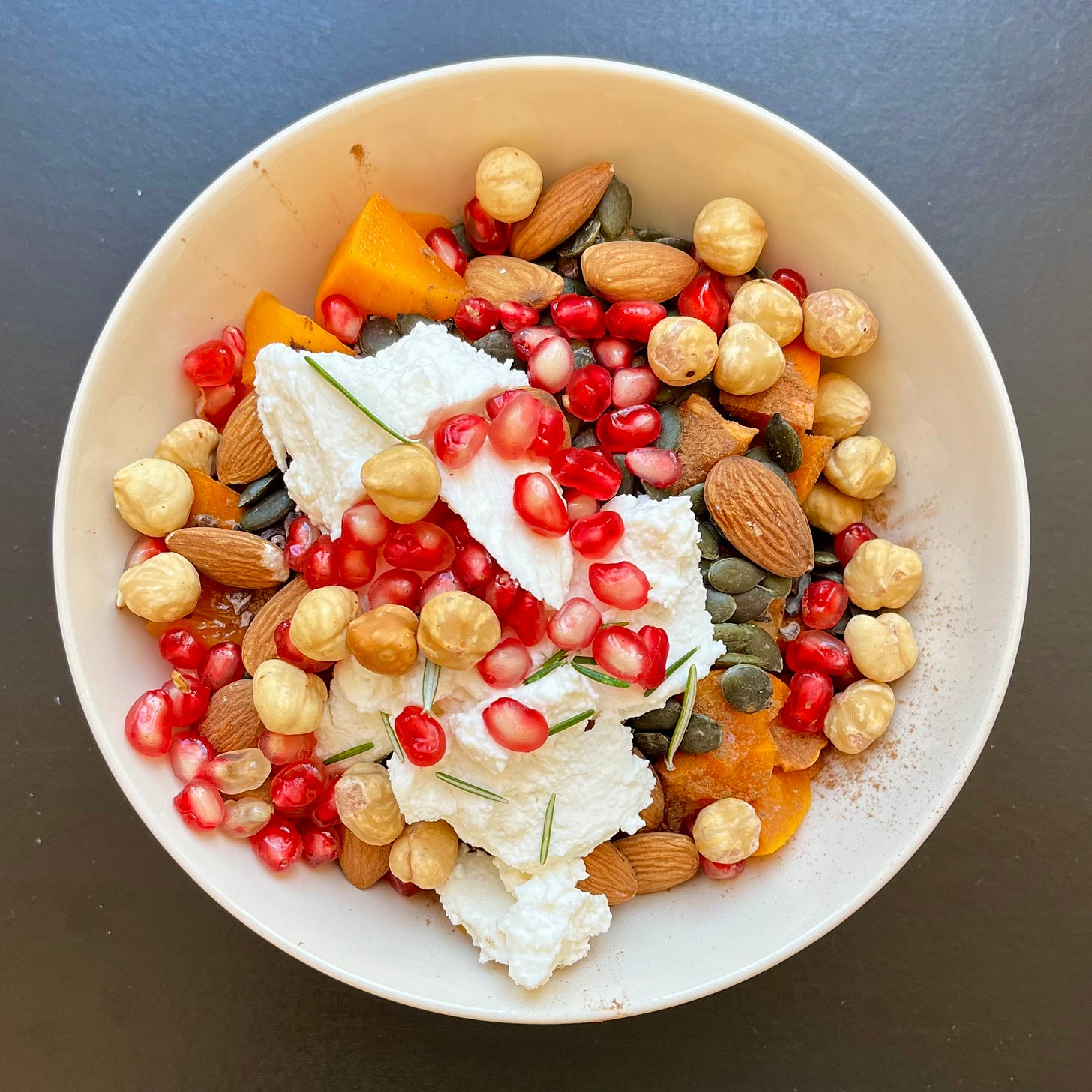
Italy awakens the chef in Daniel and the gourmand in me. The food here is transformative. It nourishes our cells, makes us more creative in the kitchen, and changes our perspectives on what role meals should have in our life. I’m often not patient enough to prepare a dish with care and can eat while writing, not truly tasting what I put in my mouth. But the quality of Italian food slows me down. I pay close attention to this transformation, hoping it will be a permanent change.
The Mushroom Festival—Take One
The weekend after Daniel and I arrive in town, the Sagra del Fungo begins, a yearly 4-day mushroom festival welcoming the autumn season.
On the first night, we get to Piazza IV Novembre at 7:45pm, fifteen minutes after the food tent opens. The line to place our order at the only available counter is already too long for the square and spills out onto the street. Daniel and I are too hungry for what looks to be an hour wait and quickly tour the square.
The festival market has a cute fifties vibe. There’s a Tupperware stand, a merry-go-round, a table with candies of all kinds, a woman selling secondhand leather jackets, and two salumerias where you can taste sausage slices and marvel about huge wheels of pecorino cheese kept outside the fridge.
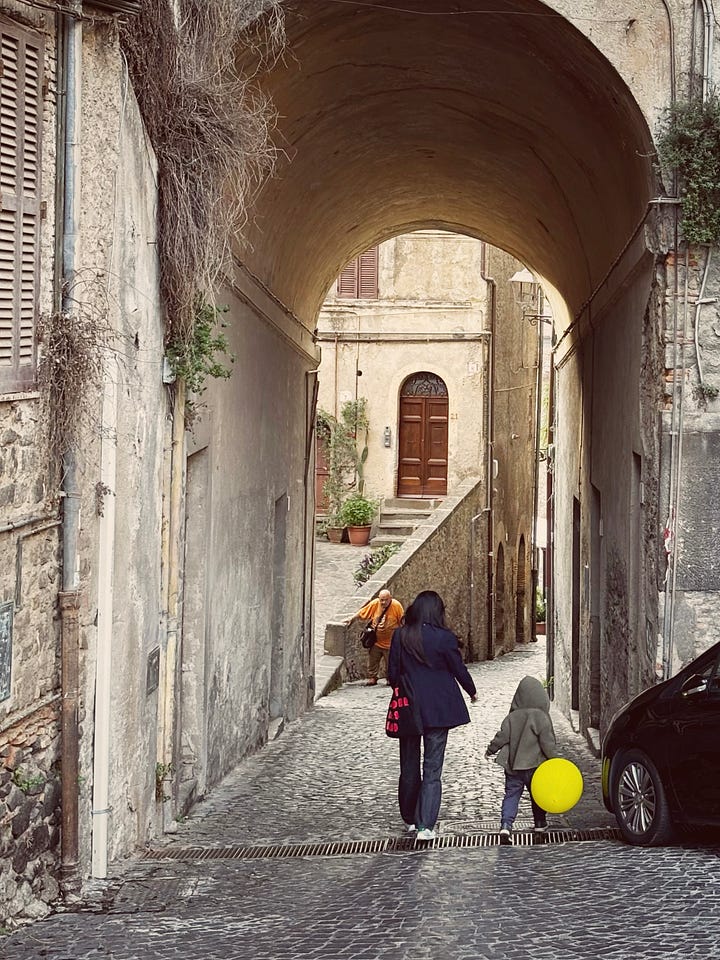
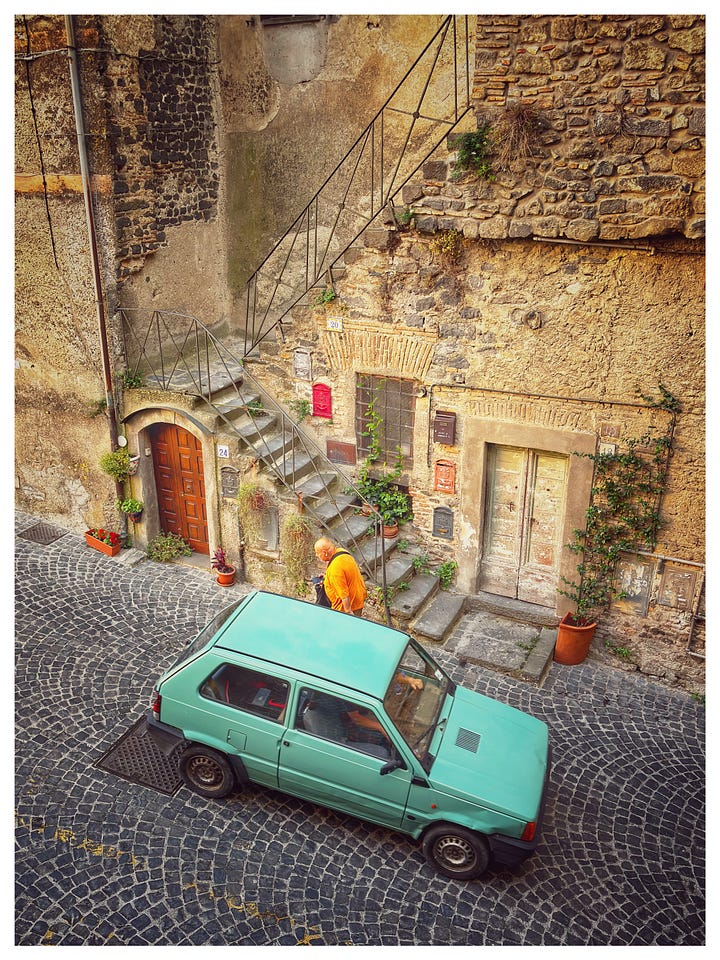
Surprisingly, nobody sells mushrooms. Or who is that hiding behind the huge menu board? A woman sells porcini for €33/kilo (about $17/pound) and we buy two handfuls. When I used to buy them in Paris, they were often yellowing and sometimes wormy. These porcini are firm and their flesh white.
Back home, we carefully brush and scrape the dirt off the first batch, slice them up, sauté them in olive oil with some pink shallots, garlic, rosemary, and salt, and eat them as their own separate dish. Two days later, we will use the second batch in a pasta* with fresh basil, parma ham, and parmesan. The result is so delicious that we have trouble keeping a conversation going: Each bite draws our attention to the flavors in our mouth.
* Side Note: Italy has the best gluten-free pasta in the world. I love Vietnam’s rice noodles and Japan’s soba (buckwheat) noodles, but these are noodles, not pasta, and they rarely have that bite you crave for your Italian dishes. Here I eat Rummo, which tastes as close to the original wheat pasta as possible. (No, I don’t make a commission. Then again, if Rummo reads this: Send me some goods!)
The Mushroom Festival—Take Two
On the second festival night, we arrive on the square with a pre-dinner snack in our bellies and fifteen minutes ahead of time. The line is already daunting, but I’m committed and convince Daniel to wait with me. Where else in the world can I taste fried porcini breaded with rice flour?
I wave to a supermarket cashier, also in line, and nod at a man I often encounter at the steps near the castle. We’re all here for the same reason and this binds us.
Forty-five minutes later, Daniel and I order two dishes and two plastic beer glasses filled to the brim with red barrel wine. The wine doesn’t taste like the rich organic Montepulciano we drink at home, but it will do.
The tent is set with long tables that are shared among all and the sphere is convivial. Mushroom pastas come out steaming hot on white plastic plates. I listen to the numbers being called out. One of them will be ours, 317, yet I haven’t yet learned to count that high in Italian. Our neighbors at the table overhear our worries and reassure us. They’ll warn us when the time comes.
Finally, it’s time to eat! Our crispy fried porcini are good, yet not exceptionally so, and the mixed-mushroom dish contains more meat than mushroom and is therefore disappointing. But, I remind myself, I’m here to enjoy the world as I find it, not as I want it to be. And more: I’m not here solely for the food. I’m here because I want to be part of this town, this slow life on the hill.
I look around me. Six firemen are eating together, cracking jokes. Multiple families with at least three generations present take bites from shared plates. One fashionably dressed couple has brought their own wine glasses (and bottle) and toast: “Salute!” Children run between the tables to clear dishes, proud of their job. As far as I can see, everybody is enjoying themselves.
I feel that lift in my chest again: Their joy is enhancing mine. And this is of course why we like sharing meals. Eating together is happiness squared.
Related Posts
Time to Say Goodbye
Next week, I’ll let you in on what’s happening back stage, in my writing life.
For now, please enjoy your food and each other—it’s a gift, not a given.
All my best,
Claire
P.S. What’s your favorite Italian dish? Please share your secret recipes!


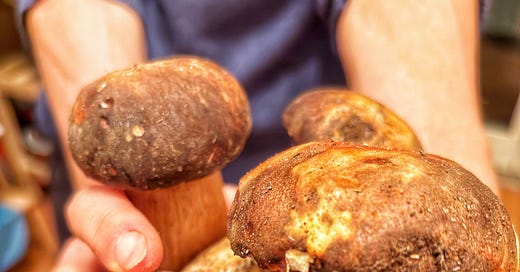



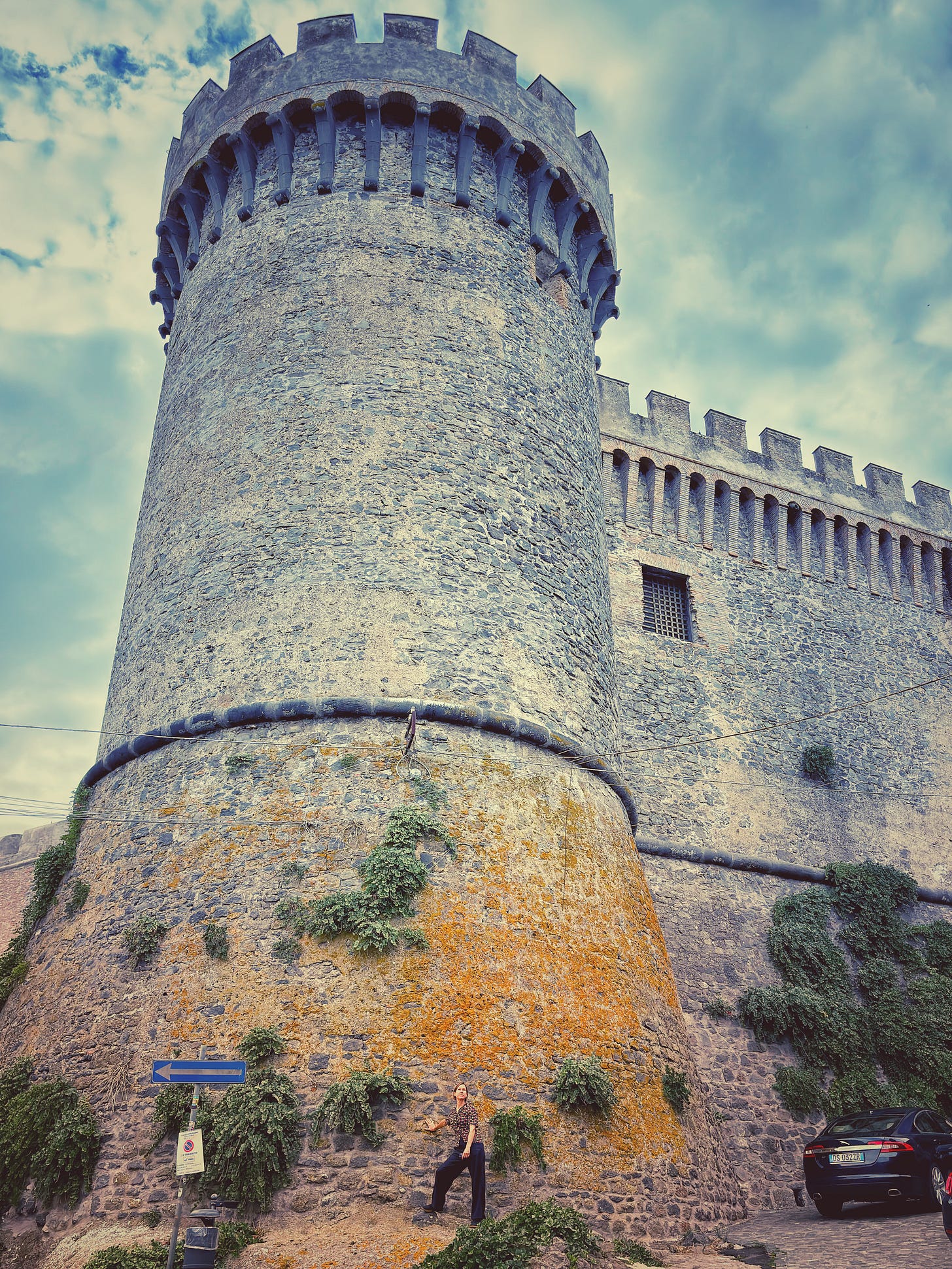
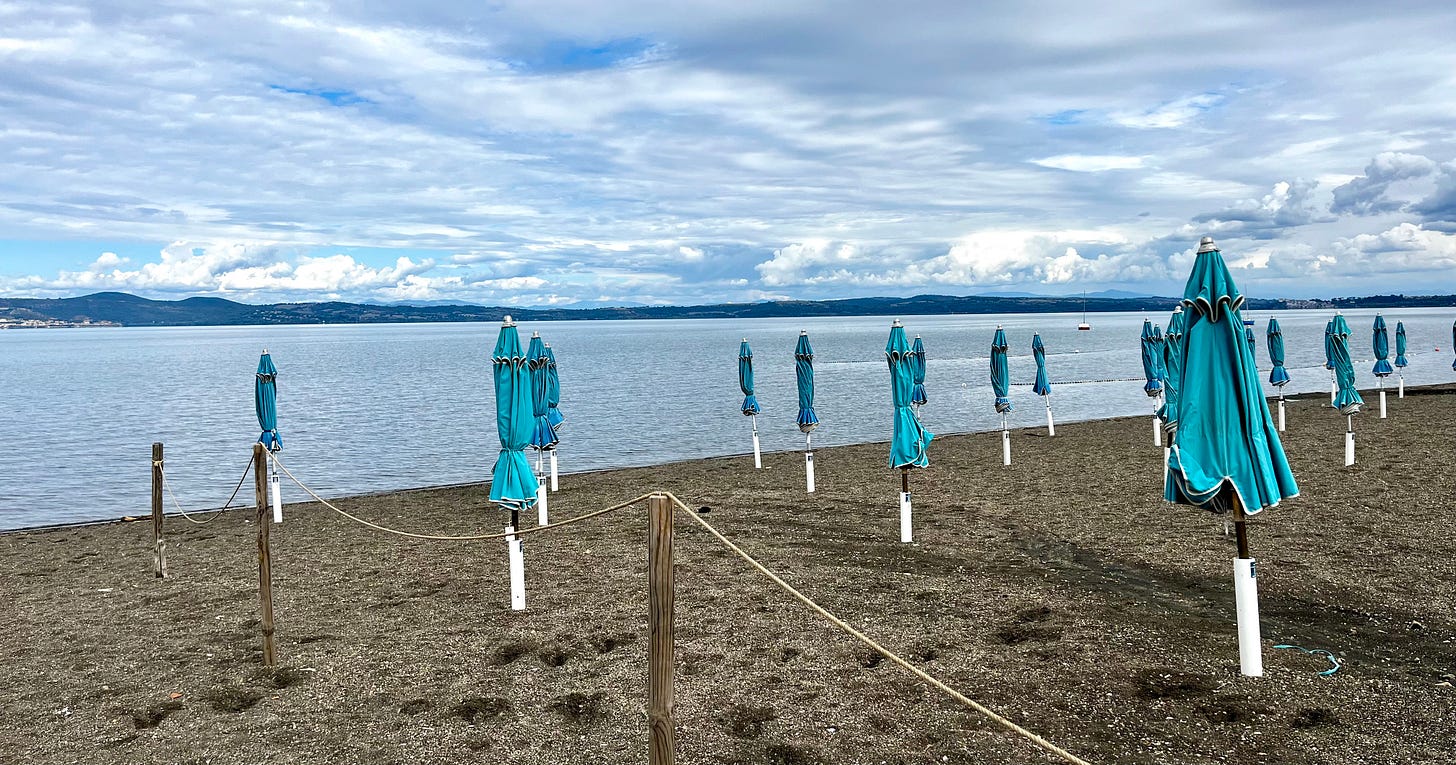
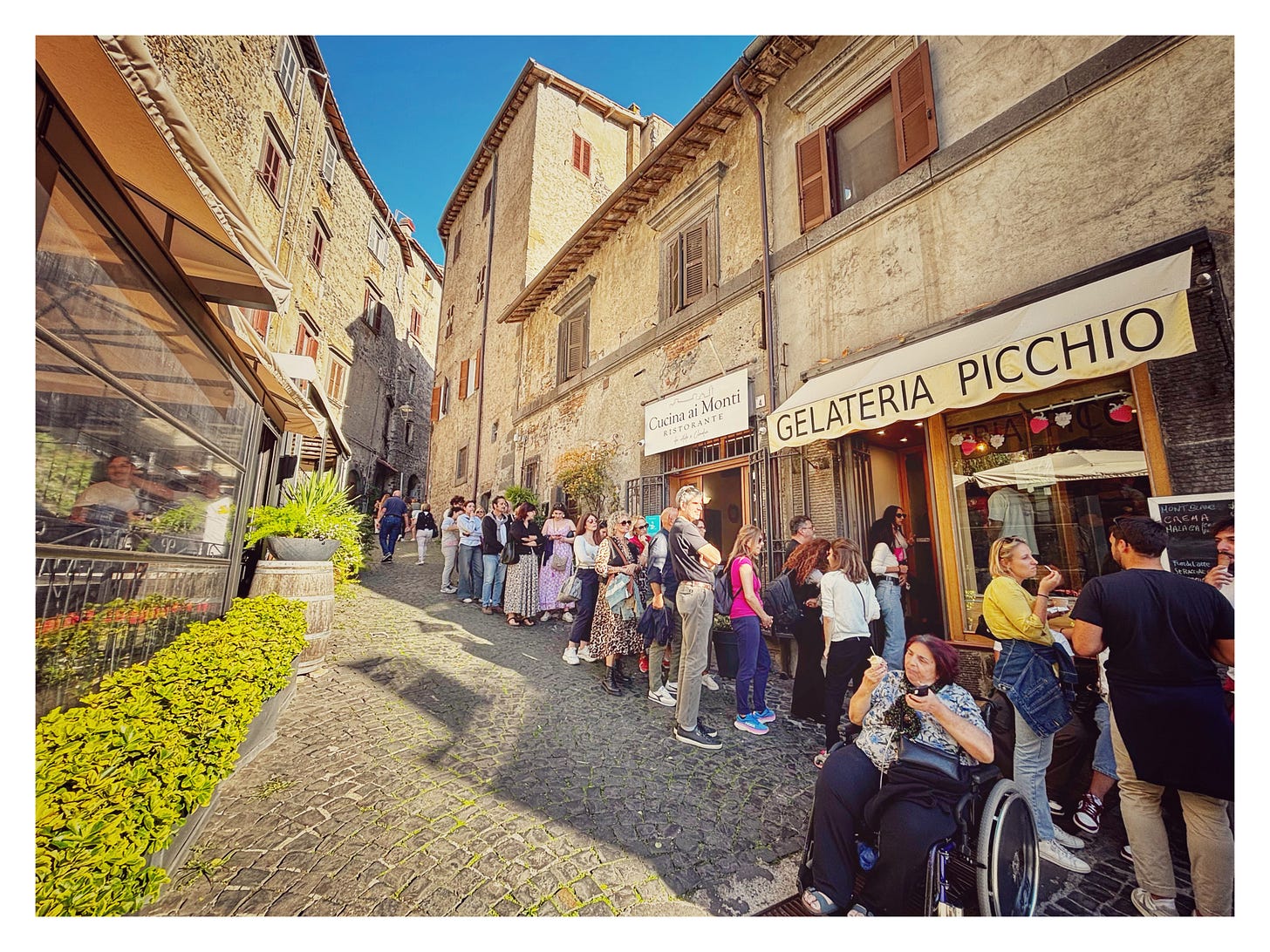
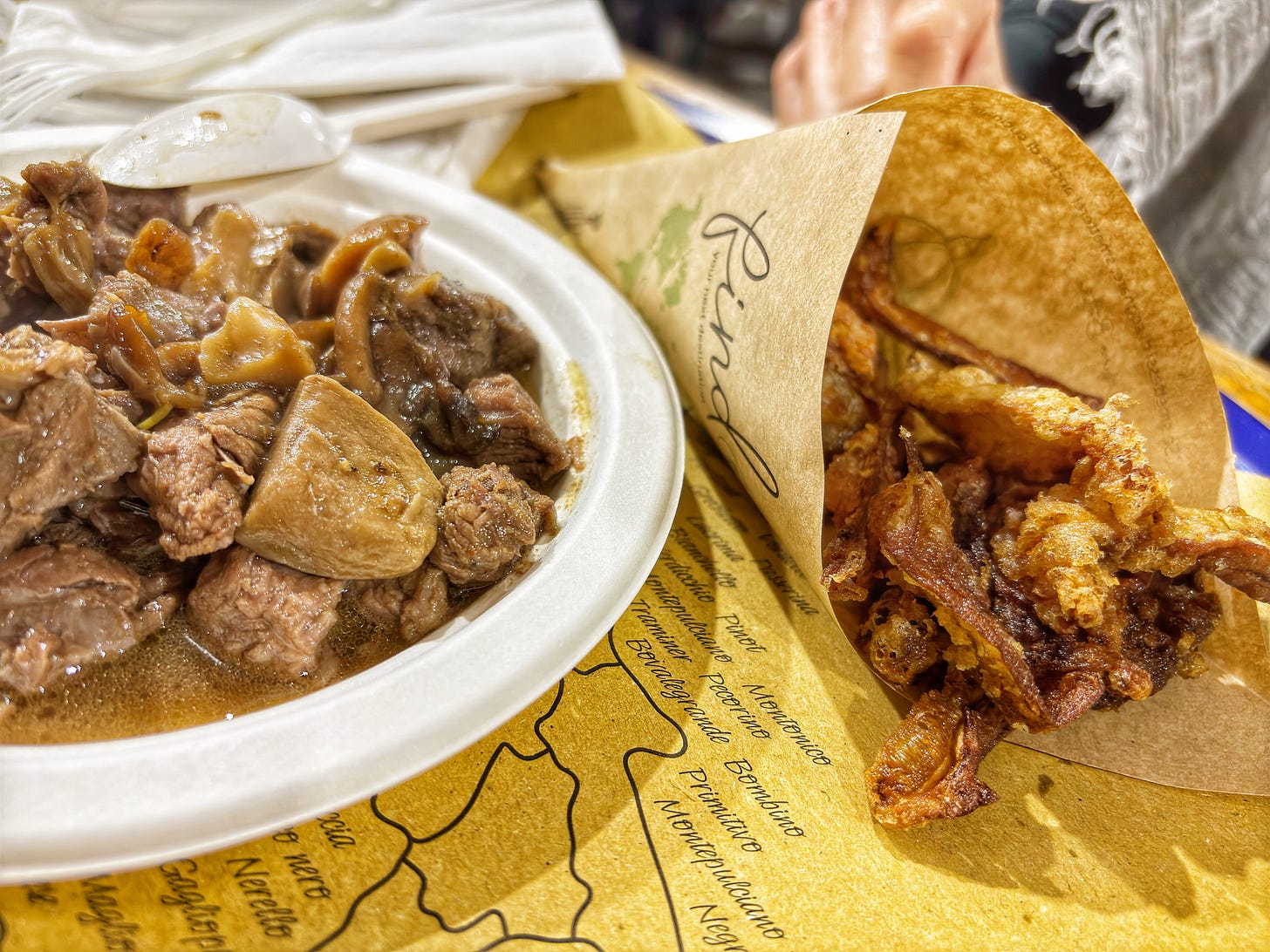
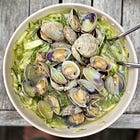

Oh man... I was salivating as I read this. After that long-ass wait I'm sorry your meal wasn't as tasty as you'd thought it would be, but you're in Italy! Can't complain about that, right? Lately, when it comes to Italian food, I'm liking my pasta with veggies and a simple olive oil/butter sauce. The dish you made with the ham, mushrooms, basil, and parmesan sounded AMAZEBALLS! That slow-living pace sounds right up my alley. Also, just a side note: on a scale of 1-10, how hawt were those firemen? Asking for a friend. LOL
This is just lovely--all of it. I love the descriptions and the photos. Thanks!